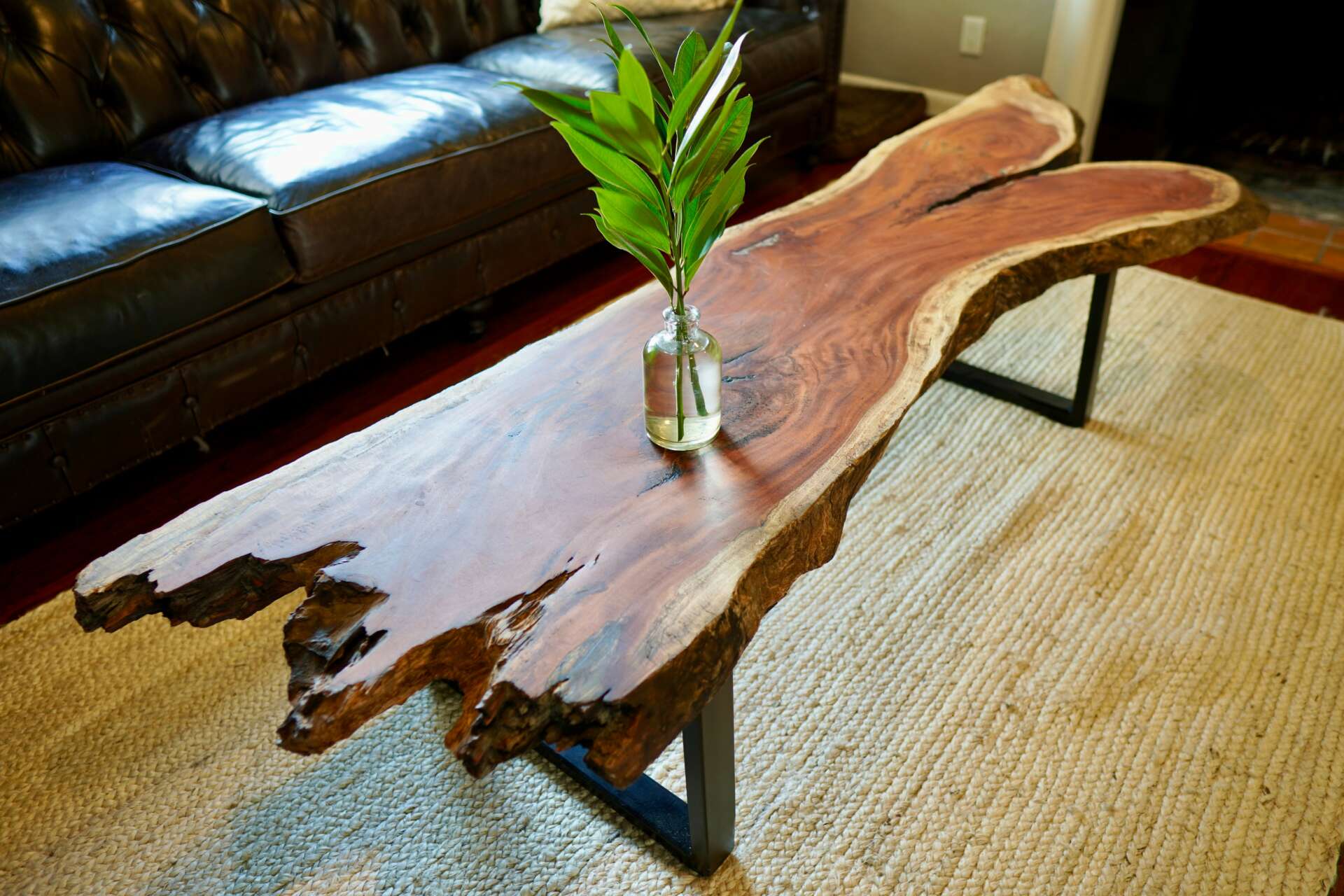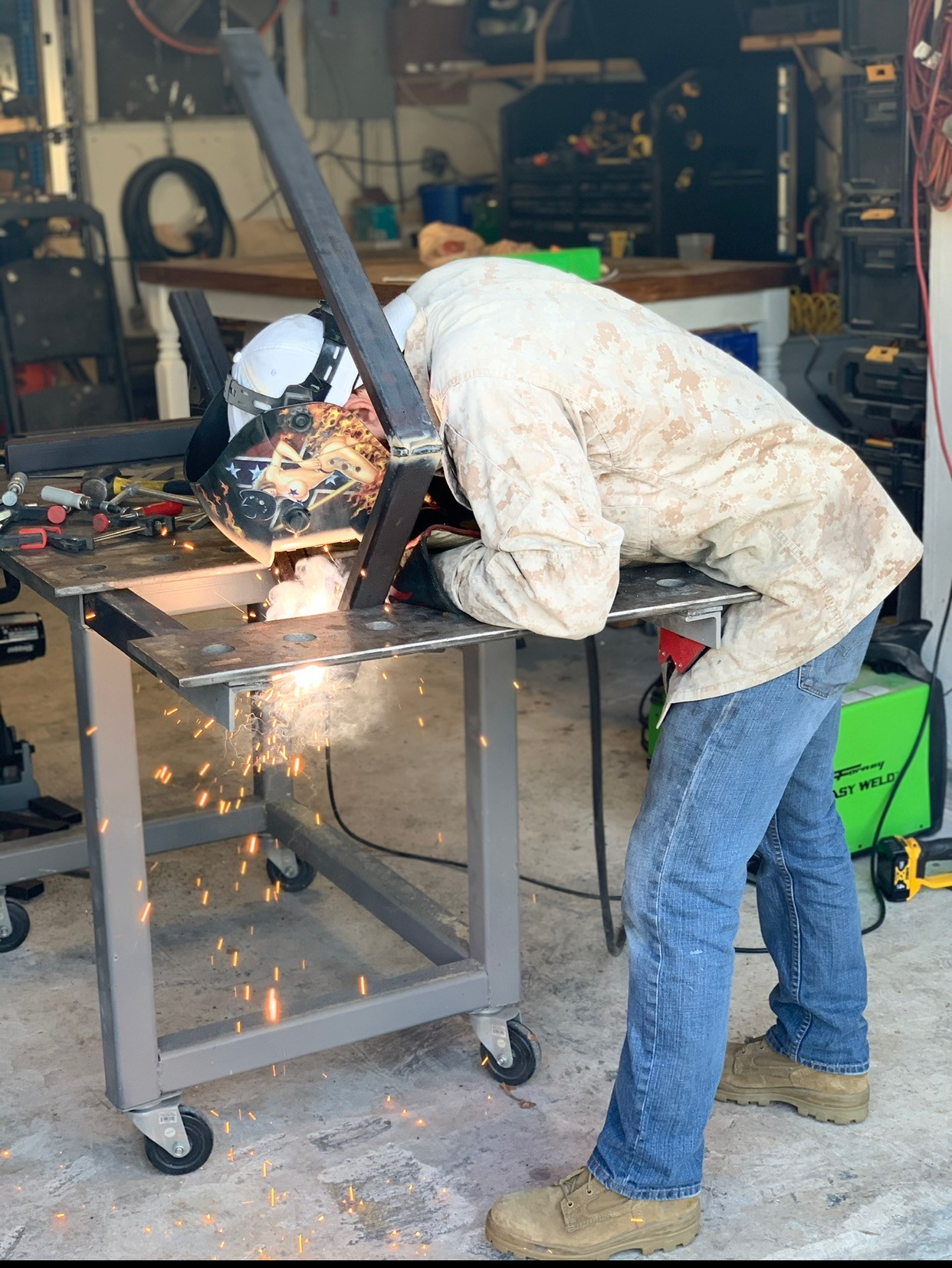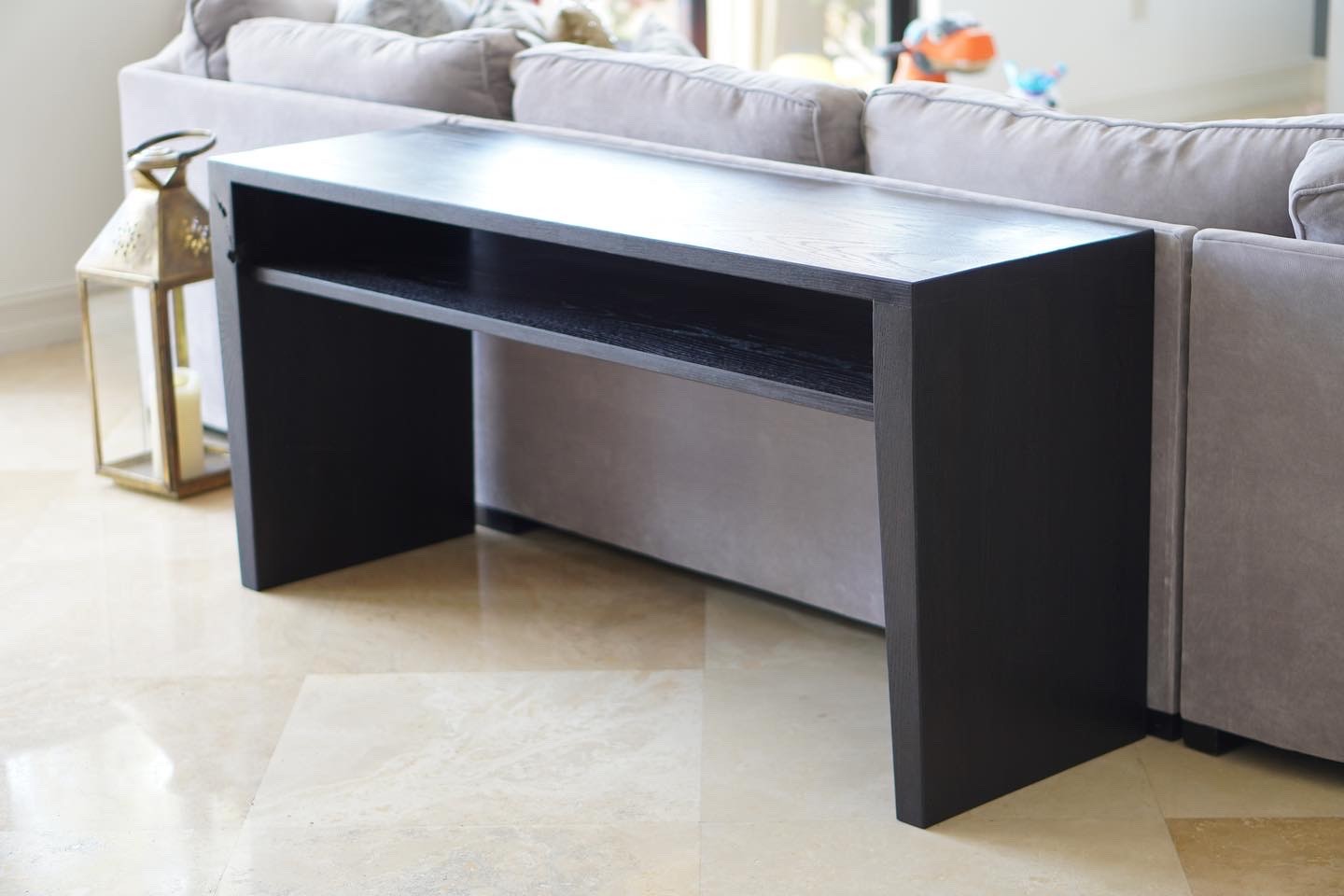We recently connected with Marcus Tschapek and have shared our conversation below.
Marcus, thanks for taking the time to share your stories with us today Can you talk to us about how you learned to do what you do?
Growing up, my father was always tinkering in the garage, building furniture or working on his sailboat. One might think that I learned a lot of my craft from him, but that is not the case. I was never really interested in committing myself to one project at a time. I was the kind of kid that would take things apart to see how they work, and sometimes get it back together correctly. At the time, I lacked the patience and attention to detail to complete most things, including homework and chores.
I began to shop for furniture for my new home. I quickly realized that most store-bought furniture is “cookie cutter”, poorly made with no quality control, and there were no options for sizes or colors. What you see is what you get. So people often buy entire room sets to match everything. I didn’t like that idea on my budget at the time so I built my furniture myself. I had enough tools to get by and started in my one-car garage. There, I designed and constructed furniture for my house over the next few years. During this time, I learned mostly from furniture books that were handed down to me from my father. These books explored tried and true methods of furniture building with no shortcuts or work-arounds. After making my own furniture, my friends began to commission me to build furniture for their houses. At the time, I didn’t realize what a demand there is for custom, one of a kind, furniture pieces that could be designed for any space. So, after 8 years of building custom furniture, with style that changed for each piece, I learned many details about my trade, simply from repetition and attention to detail.
To learn a craft like mine, one must practice said craft. To learn faster, one must practice faster. Knowing what I know now, I would have taken more jobs, more frequently, without sacrificing the quality of my work to learn more techniques and mostly make more mistakes early on. I think that I learn best from mistakes, as they can be costly in time and materials.
The most essential skills I’ve acquired, is attention to detail. To have the ability to take a step back from a design or a build to select the best method, material, or come up with a new idea; that’s how great breakthroughs happen. That’s what gives my work special meaning to me. Building the same thing over and over again doesn’t require this skill as the construction becomes monotonous.
In furniture making, the only obstacles that stood in the way of learning more are time and ego. Time is a given. You always need more of it, yet it wont budge. Ego is a controllable obstacle. In my case, my ego has held me back from taking a job that I though was too simple or not challenging enough. Those jobs are also learning tools as much as any other.


Marcus, before we move on to more of these sorts of questions, can you take some time to bring our readers up to speed on you and what you do?
My name is Marcus Alexander Tschapek and my company is Vintage Veteran, furniture designer and maker. I started my business after years in the craft and the “Vintage” part comes from the idea of making heirloom furniture that will last multiple lifetimes. The “Veteran” part comes from me. I am a proud veteran of the United State Marine Corps. I served as an infantryman in a FAST (Fleet Anti-terrorism Security Team) Unit and the most highly decorated battalion in the United States Marine Corps, 2nd Battalion, 5th Marine Regiment. After serving the Marine Corps for 5 years and 4 deployments, I separated and began building furniture for myself, honing my craft.
Since then, I have been building custom orders that range in style and materials used. Together, with the client, I come up with a design that works for their space and a style that works for their taste. I believe that no one should settle for something they don’t want. So if you cannot find a piece of furniture at a store that works for you and your space, then a custom piece is what is needed. I help the clients’ ideas come to fruition and deliver a piece of happiness, that may have never been had if they settled for something less.
I am most proud of building things that will outlive me. My legacy is in my work and it all is developed from my hands. I am the only person touching and shaping every piece of furniture that comes out of my shop. Quality control is easy when there is only ME making the pieces. I want my clients to know that dedication to service is in my blood and I incorporate it into everything I do.


What’s the most rewarding aspect of being a creative in your experience?
The most rewarding aspect of being a craftsman, is seeing raw materials form into a functional piece of furniture right in front of my eyes. I like to think that without me, or my client for that matter, this piece of furniture would never have been created. Each one is so different and that keeps it fresh, allowing me to enjoy what I do.
We’d love to hear the story of how you turned a side-hustle into a something much bigger.
When I began my furniture building side-hustle, I was also working full-time as a Detective for a local police agency. Putting in over 60 hours a week in my full-time job, then working on clients’ projects when I was home. This was troublesome for my personal life and something had to give. I recently had been given the opportunity to make Vintage Veteran my full-time business, and I never looked back. Thankfully, over the years of doing this on the side, I built up my inventory of specialty tools instead of purchasing them all at once to outfit my shop. I am still working out of my one car garage, but I have goals of owning a stand-alone building with a showroom and shop space, all in one.
Contact Info:
- Website: www.vintageveteran.us
- Instagram: VintageVeteran
- Youtube: youtube.com/vintageveteran


